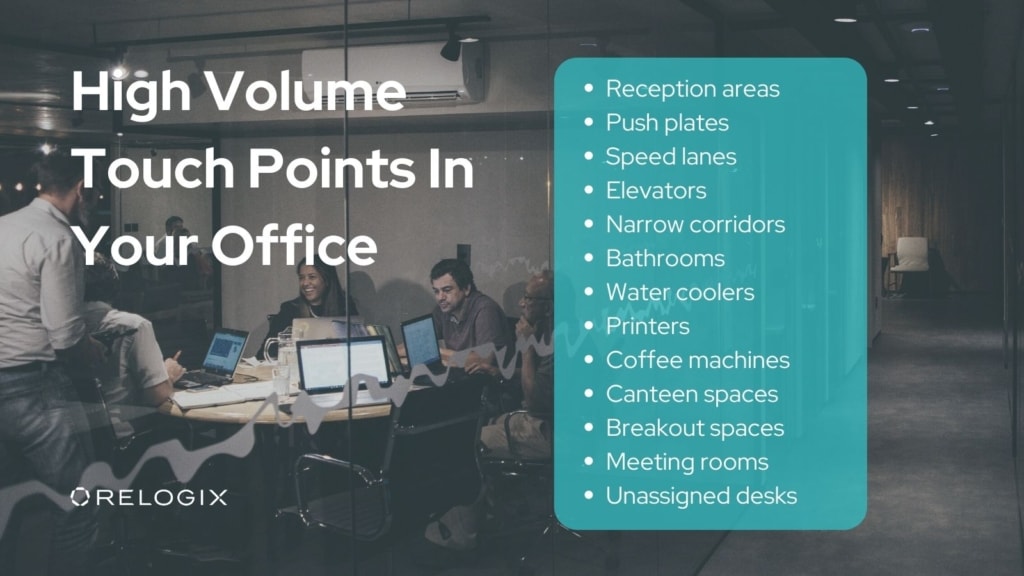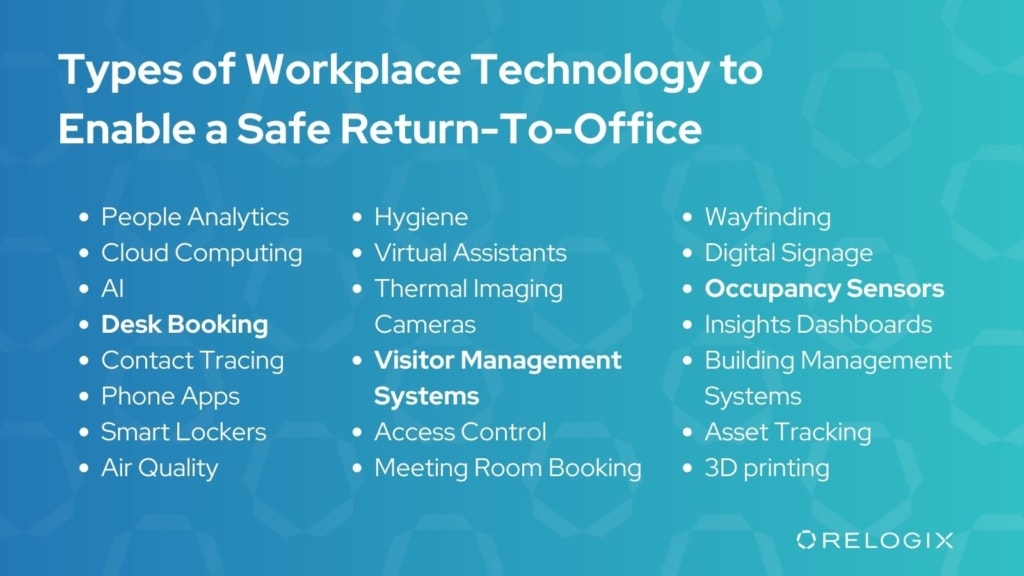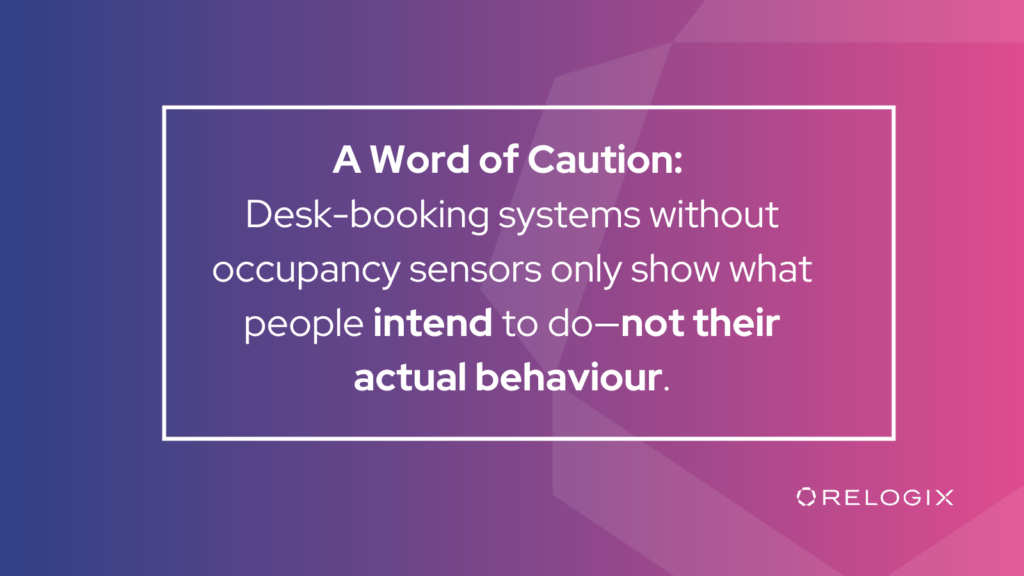Using Workplace Technology to Make Employees Feel Safe
These days, organizations are scrambling to plan a safe return to the office. Without a single source of truth on the best methods, some are focusing on quick fixes: acrylic screens, tape, signage, and hand sanitizer. Just how safe will employees feel, arriving at a workplace that looks like a crime scene?
On the flip side, forward-looking organizations are seeing a chance to re-imagine how they work with technology. The right tech can not only ensure a safe return to work, but also change the way we work into the future.

With the pandemic, in came discussions about how to handle bottlenecks and high touch points:
- Reception areas
- Push plates
- Speed lanes
- Elevators
- Narrow corridors
- Bathrooms
- Water coolers
- Printers
- Coffee machines
- Canteen spaces
- Breakout spaces
- Unassigned desks
- Meeting rooms
But there’s a difference between being safe and feeling safe. Workplace safety refers to physical safety, yes. But there’s also psychological, social, emotional, moral, and health safety. Technology has a massive part to play in making sure employees are and feel safe, once back in the workplace.
Some types of technology that can create a safe return are:
- People Analytics
- Cloud Computing
- AI
- Contact Tracing
- Phone Apps
- Smart Lockers
- Air Quality
- Hygiene
- Virtual Assistants
- Thermal Imaging Cameras
- Visitor Management Systems
- Access Control
- Desk Booking
- Meeting Room Booking
- Wayfinding
- Digital Signage
- Occupancy Sensors
- Insights Dashboards
- Building Management Systems
- Asset Tracking
- 3D printing

The most popular technologies so far have been visitor management, desk booking, and occupancy sensors. Visitor management systems are getting people in and out of buildings safely and efficiently by automating the entire process—some systems even integrate temperature checks.
Some countries declared that the pandemic meant the end of hotdesking. Others went crazy for desk-booking systems that assigned desks, got them sanitized between uses, and even set up contact tracing.
These new ways of working led to lots of talk of portfolio rationalization. Organizations set out to better understand how employees were using their workspaces. Some jumped straight to occupancy sensors; others declared they’d rationalize spaces using data from the desk-booking systems.
A word of caution: desk-booking systems without occupancy sensors only show what people intend to do. If we reflect and are honest with ourselves, we can all admit that our intentions don’t always play out into reality. Remember the days of packing a gym kit for a post-work session, only to end up heading straight home to slump in front of Netflix? Did you ever pack a salad before your colleagues tempted you out for lunch? Remember booking nights out with friends, weeks in advance, only to pray they would cancel? You get the drift. These days, people wake up in the morning with a choice of where they work, how they work and who they work with. This means the data simply won’t show how reality differed from their intentions when they booked the spaces a week earlier.

Another wrench to throw into the mix is getting people to actually use these technologies. Would you book a table at your favorite restaurant a week in advance if you knew they always had more than enough seats for everyone? Where larger office spaces don’t see a lot of use, people will just turn up on the day and beach towel their favorite spaces.
For desk-booking to be actually used as intended, the workplace has to have some supply and demand tension—the right number of the right spaces of the right size. The space also has to be prepped for people to do their most efficient work, have the right tech available, and the right co-workers present. Hey, it could even be as simple as—it’s sunny outside, and your employee wants to stay at home and work from the garden. This is our new reality, and to cater to it, we need to make decisions based on data.
It’s not that there’s not enough data, or that in the future there won’t be enough. The problem is making sure that data is usable and readable by the right people at the right time. No one managing space has the time or mental bandwidth to crunch numbers. They want answers—insights, ready and waiting. This is where Conexus fits in.
Despite the awful situation the pandemic has put us in, there are still things to be thankful for. The spotlight on our essential workers, random acts of kindness, community spirit, and our climate is an important reminder: it’s not things and places that make us happy. It’s the people around us.
We all use technologies to make our lives easier. It’s time we fully embraced workplace technologies in the same way. But they do have to be the right technologies for the right reasons.
Just how prepared are we to embrace the ‘Digital Upgrade’ cited by the Institute of Workplace and Facilities Management (IWFM) report?
As you plan your organization’s return to work, people should be at the start, middle, and end of your thoughts. The best way to do this is to embrace the right technology for the right reasons. This will make sure your people are safe and feel safe. It’ll make sure that, as we move into the future, your workplace portfolio is driven by data that comes from a single source of truth.

